should I remove the tree?
Angie K
5 years ago
Featured Answer
Sort by:Oldest
Comments (64)
ulisdone
5 years agothreers
5 years agoRelated Discussions
Should I remove trees?
Comments (3)Well... The root stock will theoretically produce fruit... Many of those rootstocks tend to produce yellow, bland fruit... You can graft new tres onto those rootstocks - and potentially get something worthwhile... without having to pay for the whole tree... The next question.... Do you know anything about the varieties? Are they varieties that you are either personally interested in, or are interested in maintaining/cropping to sell for market fruit? If you don't want to fool with fruit trees - then you probably ought to consider either leasing the orchard out to a proper Apple farmer - who will maintain and crop it... or maybe get rid of the trees.... Especially if they are more "Modern" non-heirloom apples.... There really isn't much heirloom preservation value in a 10-year old orchard full of yellow delicious and red delicious apples... Now.. If they are old fashioned, oddball varieties.. then there may be some interest in preservation... Thanks...See MoreCherry tree close to house and sidewalk
Comments (21)If you keep it pruned the roots will have to feed less so won't grow much.. I had a huge fig right next to our house..they are bad offenders..it didn't do any damage but was way too big for the area. One question..(you've probably moved the tree by now) what direction is the house facing? if south, no way would I move it! I'm madly planting trees that will get huge to shade our patio and large gravel driveway and parking area. They are all heat sinks. And after this stinking hot summer..we need more shade on our S-SW facing home. The trees are further away though. I do agree with gardengal48 though. Structurally sound foundation etc. I'm also in PNW....See Moresite of Japanese Maple tree
Comments (1)That IS rather close :-) I'd not be worried about the house and foundation - Japanese maple roots are not problematic in this regard - but I would be a bit worried about the tree itself. That close to the side of the house will impede its abilty to grow unencumbered and you will likely get some deformation of the shape and perhaps an unusual growth habit. Having said that, a 10' J. maple of any maturity will not be the easiest thing to move. And since you have no idea of the cultivar, it's quite possible that it could grow much larger than the 10' height it is now and with an unknown spread. If you can, it would be great to post some photos so we could help you narrow down the cultivar and plan the best way to proceed. If moving is recommended, when the tree is in dormancy is the best time. It is also possible that the tree could remain in place, but that's a decision best left to a visual determination. Post some photos if you can :-)...See MorePomegranate tree in container in Tiburon, CA losing leaves and flowers
Comments (5)Another heat lover..they look great in SanJose. I think yours looks pretty good too. What I see is..a bit too dry,and the roots open to the air is not good. Mulch. I kind of like that black dyed cedar to boost heat for hot lovers. I'm sure any mulch for you would help. Mulch,fertilize ( its a bit hungry looking) and water well....See MoreChristopher CNC
5 years agoYardvaark
5 years agolast modified: 5 years agoeverdebz
5 years agoeverdebz
5 years agoAngie K
5 years agoAngie K
5 years agoChristopher CNC
5 years agoAngie K
5 years agoChristopher CNC
5 years agoAngie K
5 years agoSandra Grimsley
5 years agopartim
5 years agolast modified: 5 years agoredsilver
5 years agoNHBabs z4b-5a NH
5 years agoChristopher CNC
5 years agoAngie K
5 years agoIvy Lea
5 years agogardengal48 (PNW Z8/9)
5 years agowednesday morning
5 years agogardengal48 (PNW Z8/9)
5 years agojunco East Georgia zone 8a
5 years agochloebud
5 years agoNHBabs z4b-5a NH
5 years agoDebbie Sheegog
5 years agocecily 7A
5 years agoChristopher CNC
5 years agogardengal48 (PNW Z8/9)
5 years agolast modified: 5 years agoCheryl Hannebauer
5 years agoChristopher CNC
5 years agochloebud
5 years agoChristopher CNC
5 years agoAngie K
5 years agoAngie K
5 years agosaccharum
5 years agojunco East Georgia zone 8a
5 years agolast modified: 5 years agogardengal48 (PNW Z8/9)
5 years agoChristopher CNC
5 years agolast modified: 5 years agopartim
5 years agogardengal48 (PNW Z8/9)
5 years agolast modified: 5 years agoAngie K
5 years agoeverdebz
5 years agolast modified: 5 years agoDebbie Sheegog
5 years agoIvy Lea
5 years agoIvy Lea
5 years agoIvy Lea
5 years agoIvy Lea
5 years agoAngie K
5 years agoJ Williams
5 years ago
Related Stories
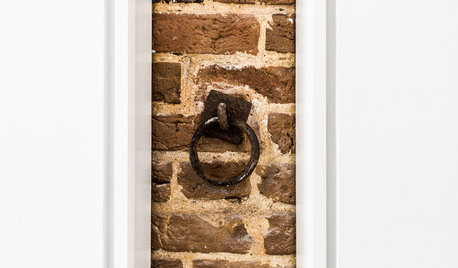
LIFEYou Said It: ‘Rather Than Remove Them, They Framed Them’
Design advice, inspiration and observations that struck a chord this week
Full Story
GARDENING GUIDESTree Care: Common Tree Diseases and What to Do About Them
Learn to recognize trees that may be affected by diseases or pests so you can quickly take action
Full Story
GARDENING GUIDESHow to Keep Your Trees Healthy
Ensure your trees’ vigor for years to come with these tips for protecting roots, watering effectively and more
Full Story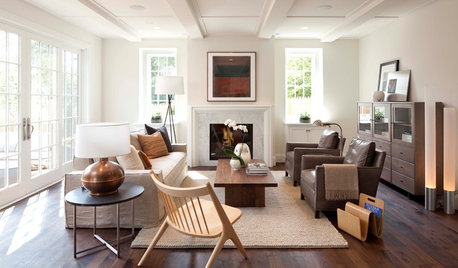
HOUSEKEEPINGHow to Remove Water Rings From Wood Tables
You may be surprised by some of these ideas for removing cloudy white water marks from wood surfaces
Full Story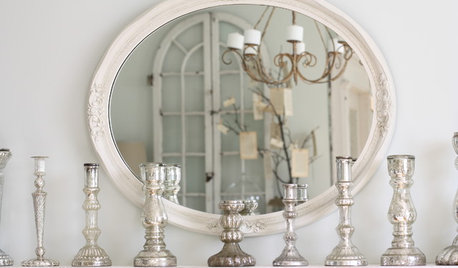
HOUSEKEEPINGThe Simple Way to Remove Wax From Candlesticks
Before you make a mess of things, read these easy steps for removing melted wax from your candlesticks
Full Story
SIDE YARD IDEASNarrow Trees for Tight Garden Spaces
Boost interest in a side yard or another space-challenged area with the fragrance and color of these columnar trees
Full Story
LANDSCAPE DESIGNThe Unparalleled Power of Trees
Discover the beauty and magic of trees, and why a landscape without them just isn't the same
Full Story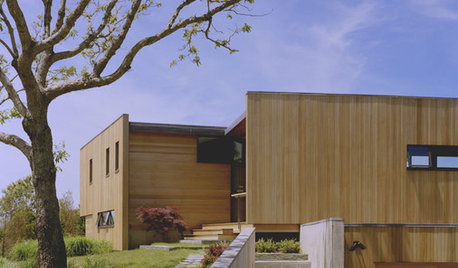
GARDENING AND LANDSCAPINGOld School Green Design: Keep the Trees!
Trees in the landscape add a sense of place, connection to nature, shade — and great beauty
Full Story
FUN HOUZZEverything I Need to Know About Decorating I Learned from Downton Abbey
Mind your manors with these 10 decorating tips from the PBS series, returning on January 5
Full Story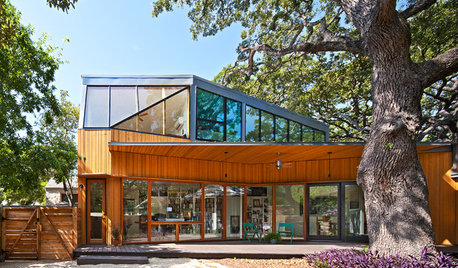
ADDITIONSHouzz Tour: Tree Respect Drives a Dynamic Modern Addition
Protecting a heritage oak calls for creative thinking, and this Texas home shows the successful result
Full Story













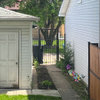
grdnbeth